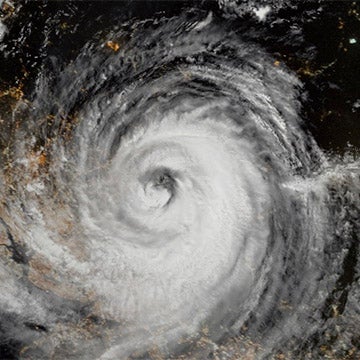A major new version of Moody’s RMS RiskLink®, RiskBrowser®, and related products was made generally available on June 14, 2023. The new Version 23 includes updates to existing models for core perils and for climate change views and includes enhancements to geocoding, model flexibility, data framework, security, and more.
As Moody’s RMS has done in previous years, Version 23 models and associated expanded functionalities were released simultaneously for both on-premises and hosted clients using RiskLink and RiskBrowser, and applicable updates were applied to all Moody’s RMS Intelligent Risk Platform™ (IRP) applications.
These IRP applications include Risk Modeler™, ExposureIQ™, TreatyIQ™, UnderwriteIQ™, and the Location Intelligence API. With this new release, the IRP will now simultaneously support five model versions: 18, 18.1, 21, 22, and 23.
What's in the new Version 23 release? Some key updates include:
- Moody's RMS North Atlantic Hurricane Models (including Climate Change Model)
- Geocoding updates in 37 countries including new 'Points of Interest' resolution
- U.S. and Caribbean Industry Exposure Databases and Industry Loss Curves
- Global Post-Loss Amplification (PLA) Scale Factor for Detailed Loss Model (DLM) analyses
- Moody's RMS U.S. Inland Flood HD Model v1.2 update
- Improvements in security, password rotations, and environment pre-requisites
Robust View of Tropical Cyclone Risk: North Atlantic Hurricane Models
The release of Version 23 ensures that Moody’s RMS continues to provide the market with a suite of North Atlantic hurricane modeling tools, analytics, and data solutions that reflect the most mature, robust modeling view of the hurricane risk landscape.
Informed by a combination of new hurricane activity and loss data since Version 21, analysis of billions of dollars in new detailed claims data, new building code information, and new Moody’s RMS and external research, the release includes the following updates:
- Geocoding (see Geocoding Updates section below for more detail)
- Revised long-term event rates (LTR) and medium-term rates (MTR) across the entire North Atlantic Basin
- Hazard updates, including a newer vintage of underlying land use-land cover data in Florida
- New and updated historical event reconstructions
- Significant vulnerability enhancements to residential and non-residential lines – notably the elimination of the alternative vulnerability for Florida residential lines that were present in Version 21
- Specialty lines, including Industrial Facilities Model and Builders Risk
- Building inventory database
- Post-event loss amplification (PLA) factors
Additionally, Moody’s RMS has introduced new software functionality to allow users to better reflect dynamic market conditions (see Global PLA Scale Factor for DLM Analyses section below for more detail) or non-modeled sources of loss directly within the model framework.
Version 23 adds functionality that is exclusive to the North Atlantic Hurricane Models, which allows users to reflect non-modeled sources of loss by coverage type.
Such factors can have a significant impact on industry and client losses (e.g., assignment of benefits, construction cost inflation, contingent business interruption as a result of widespread power outages or infrastructure damage, litigation, excessive tree loss/damage, coverage leakage from inland flooding, etc.) and can vary greatly by coverage type.
Providing this functionality within the model framework allows users to calculate the impact of non-modeled losses on relevant policy/treaty terms within the financial module. This functionality will be available on RiskLink, RiskBrowser, Risk Modeler, and UnderwriteIQ applications and applies to all hurricane analysis types.
The model changes are incorporated into the RiskLink DLM and ALM® (Aggregate Loss Model), RiskBrowser, Risk Modeler, and UnderwriteIQ applications.
Accompanying the model updates are updates to the Moody’s RMS U.S. Hurricane Industry Exposure Databases (IEDs), Moody’s RMS U.S. Hurricane Industry Loss Curves (ILCs), and Moody’s RMS Caribbean IED and ILC, together with supporting North Atlantic hurricane data products, and new sets of wind-conditioned North Atlantic Hurricane Climate Change Model event rates to align with the updates to the Version 23 LTRs.
Consistent with previous updates, this version enables Moody’s RMS to continue to comply with the hurricane standards of the Florida Commission on Hurricane Loss Projection Methodology (FCHLPM), so the model is certified for use in residential rate filings with the Florida Office of Insurance Regulation.
After submitting Version 23 to the FCHLPM in late-2022, in June 2023 Moody's RMS was the first model vendor to receive approval its North Atlantic Hurricane models, with Version 23 certified for use on both RiskLink and Risk Modeler by the FCHLPM.
Geocoding Updates for 37 Countries
Geocoding in Version 23 sees updates and enhancements to 37 countries, including the following:
- Updated postal codes in the U.S., Canada, Mexico, Montserrat (Caribbean), Japan, and South Africa
- Updated streets in the U.S., Canada, Mexico, Finland (new), South Africa (new), and the Caribbean (11 countries, including six new countries)
- Updated administrative divisions in Canada and Mexico
- New address-point resolution in Canada, Mexico, Finland, South Africa, and four Caribbean countries (Guadeloupe, Martinique, Puerto Rico, U.S. Virgin Islands)
- New point-of-interest (building/business name) resolution in the U.S., Canada, Mexico, Finland, South Africa, and the Caribbean (31 countries)
U.S. and Caribbean Industry Exposure Database and Industry Loss Curves
Updates to the Industry Exposure Databases (IEDs) and Industry Loss Curves (ILCs) accompany the Version 23 release. This includes United States datasets for hurricane, earthquake, earthquake fire following, severe convective storm, winterstorm, and the Caribbean hurricane dataset.
Moody’s RMS has fully reconstructed the economic exposure database that underlies all 2023 U.S. IEDs. This reconstruction uses 2020 U.S. Census data for residential lines, updated methodology for commercial lines, updated replacement costs to reflect trends (e.g., durables inflation) in construction prices, and a newer vintage of U.S. Postal Service ZIP Codes and boundaries (March 2022).
Additionally, the IED includes updated insurance terms, including penetration rates, limits, and deductibles across all lines of business.
Global PLA Scale Factor for DLM Analyses
Following a major catastrophic event, claims costs can exceed the normal cost of settlement due to a unique set of economic, social, and operational factors. The various factors are quantified by Moody’s RMS within a modeling methodology termed Post-Event Loss Amplification (PLA).
Loss amplification assesses the impact and sensitivity of economic and claims costs that exceed normal expectations on a book of business. In the most severe catastrophes, it incorporates the increased spatial correlation that can occur in large events as well as the increased volatility in the calculation of uncertainty.
Version 23 introduces the ability for customers to scale the impact of PLA on DLM-modeled results. This scale factor is available for any DLM model and region that PLA is currently available for, which includes a selection of countries on five continents and across the perils of earthquake, windstorm, flood, severe convective storm, and winterstorm.
The U.S. Inland Flood HD Model v1.2 Update
To align with the updates to the North Atlantic Hurricane Version 23 update, the Moody’s RMS U.S. Inland Flood HD Model has undergone a minor update on Risk Modeler to ensure alignment and provide clients with a comprehensive and current view of risk from wind, storm surge and tropical cyclone (TC) induced flooding.
Improvements in Security, Password Rotations, and Environment Pre-Requisites
Security is a top priority for our clients as regulations around data security become stricter with each passing year. Moody’s RMS recognizes this priority and has made investments to ensure Version 23 is the most secure version of our on-premises applications in our history.
Version 23 includes a utility that enables users to easily change the service account password with minimal downtime on RiskLink and RiskBrowser. We have also updated the certified versions or eliminating entirely some of our pre-requisite products.
Finally, we have continued to identify and resolve vulnerabilities on a proactive basis in a world of constantly evolving digital threats.
If you are a Moody's RMS client and would like more information on the latest Version 23 release, please contact your Moody's RMS customer success manager.






